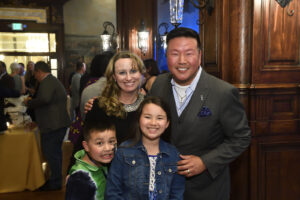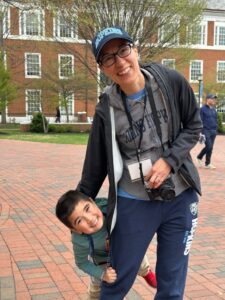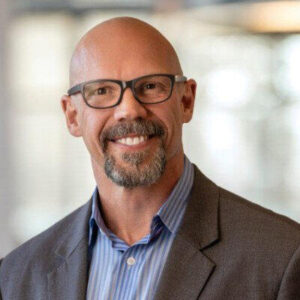Johns Hopkins UniversityEst. 1876
America’s First Research University
When the Class of 2000 first arrived on the Homewood campus, they quickly learned that building community required creativity. With no central student hub, friendships formed in hallway floor hangouts, late-night conversations on M-level of the Milton S. Eisenhower Library, and impromptu gatherings at Levering’s now-closed campus bar. Those shared moments shaped their Hopkins experience. Now, the Class of 2000 is helping create the kind of space they once imagined by supporting the new Hopkins Student Center (HSC).

“This year was our 25th reunion,” explains Joseph Yoon, A&S ’00. “And the student center that all of us wished we had — I think every Hopkins student for the past 100 years wished they had — was finally being built.”
Since graduating with a degree in economics, Yoon has remained involved with the university, serving on the Krieger School of Arts and Sciences’ Second Decade Society and the Johns Hopkins Alumni Council. He led the Class of 2000’s successful campaign to raise $10,000 for the HSC, earning the class a place on the new center’s donor wall.
But the goal wasn’t just to hit a number — it was to do it together. The Class of 2000 prioritized broad participation, encouraging classmates to give what they could. In the end, 50 alumni contributed.

“One of the most powerful things alumni can do is come together as individuals to create something bigger than themselves,” James Allan, associate vice president of Alumni Relations and executive director of the Johns Hopkins Alumni Association, says. “The power of a class, a community, a group of friends to come together and do a little bit of crowdfunding and put some money together to make something possible is amazing.”
Melissa Villanueva Lee, A&S ’00, who served on the Class of 2000’s 25th reunion committee, says the group was drawn to the idea of making a collective gift — something that would represent the class as a whole, rather than a single donor. They saw it as a meaningful way to come together and contribute as a team.
For Lee, who majored in biology and the history of art, the new student center represents an investment in the whole student experience. While creative outlets existed in her time, they were often siloed or hard to access for those outside the Peabody Institute or campus theater. She sees the HSC as a place where students can explore interests beyond their coursework — whether that means painting, performing, cooking, or just playing video games with friends.

“We tend to box people into a single category, but I think anybody would have at least one or two different interests that might be outside of what they study,” she says. “Hopkins doesn’t have to be just academic in nature. If there are opportunities for students to explore other facets of themselves, then I think the student center would be a great place for that to happen.”
That commitment to a more holistic student experience is echoed by university leadership. Allan emphasizes how meaningful it is to see this long-standing dream come to life. Hopkins students have always found their second home in the library, he says, but the HSC offers something more: a space to unwind, collaborate, and connect.
Allan sees the HSC as a true “third space.” Not home, not classroom, but something in between.
“Whether it’s as grad students or as undergrads, those third spaces are part of what make a campus feel like home,” he says. “It’s really exciting to create an entire new building full of those.”

For Yoon, supporting the student center is part of the long-term investment he and others have made in Hopkins. When he arrived in 1996, the university ranked in the mid-20s nationally. Today, it consistently appears in the top 10. While he doesn’t put too much weight on rankings, he sees them as a sign of progress and a reminder that meaningful investments require ongoing care.
Part of that investment, he and the Class of 2000 believe, includes creating opportunities for today’s students to form the same kinds of lasting memories and connections. Research consistently shows that students who have rich, meaningful experiences outside the classroom are more likely to stay connected as alumni, Allan explains. By creating dedicated spaces for socializing, creativity, and student-led activities, the new center adds an important dimension to campus life.
“Even if it’s a relatively nominal amount compared to some of my peers,” Yoon says, “I want to do my part to maintain the investment that I’ve already made.”
Topics: Alumni, Students, Krieger School of Arts and Sciences, Support Scholars, Undergraduate Student Experience